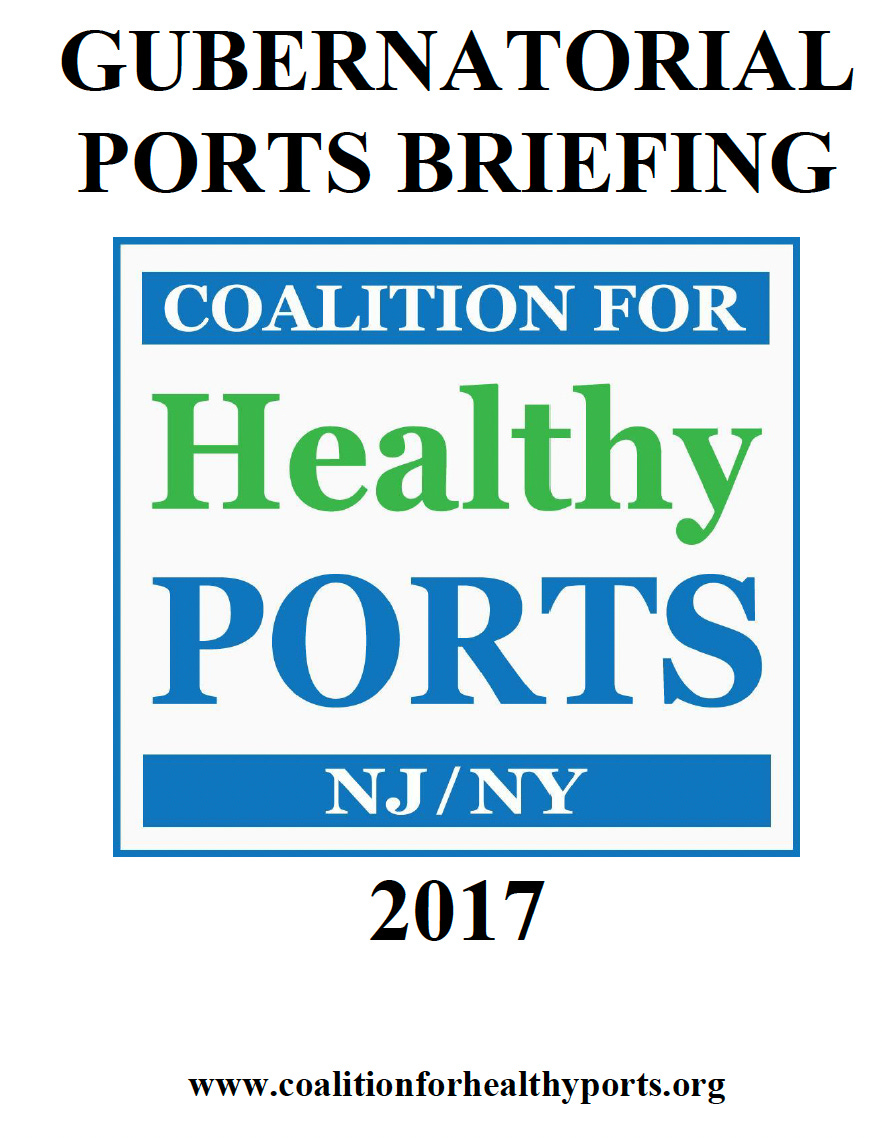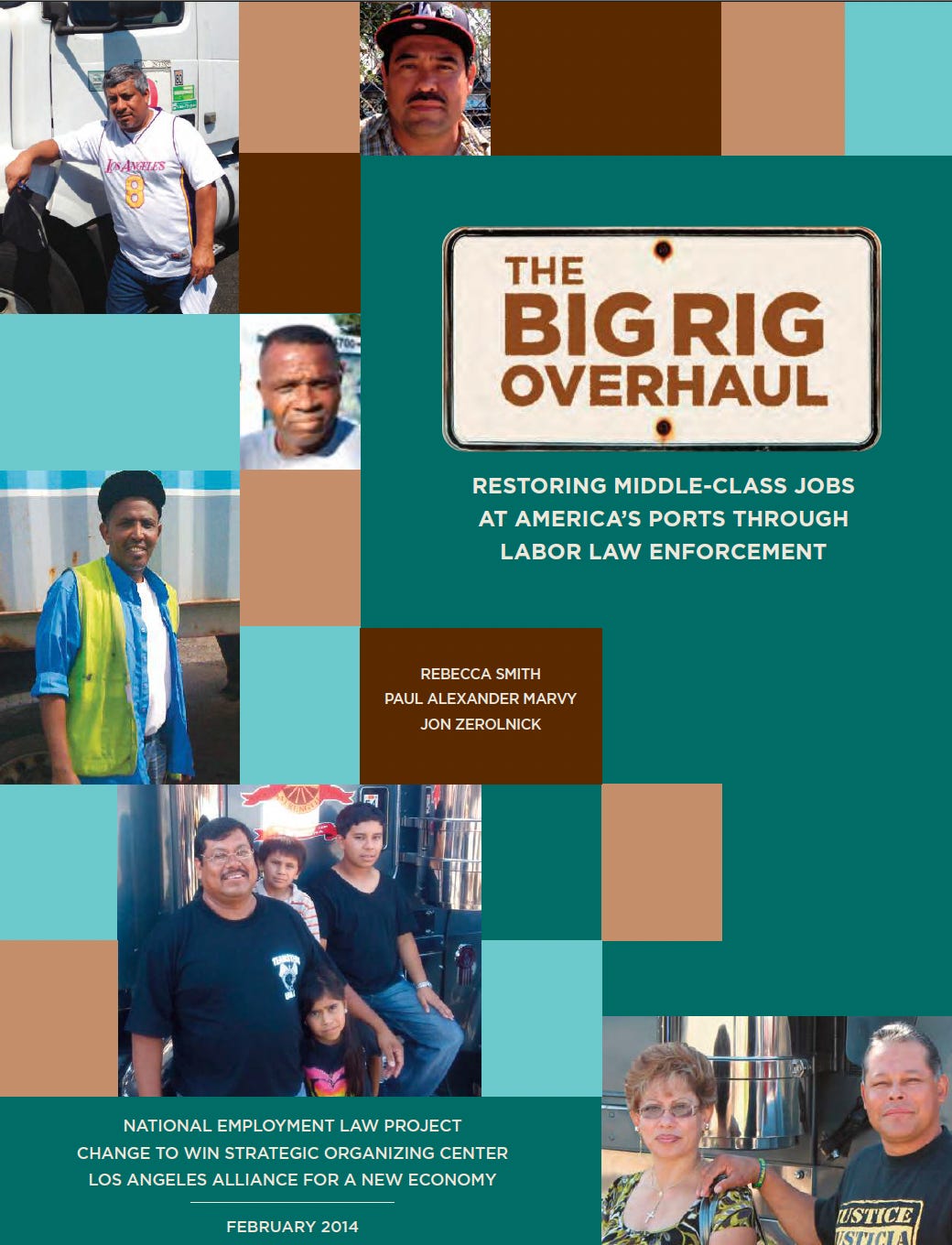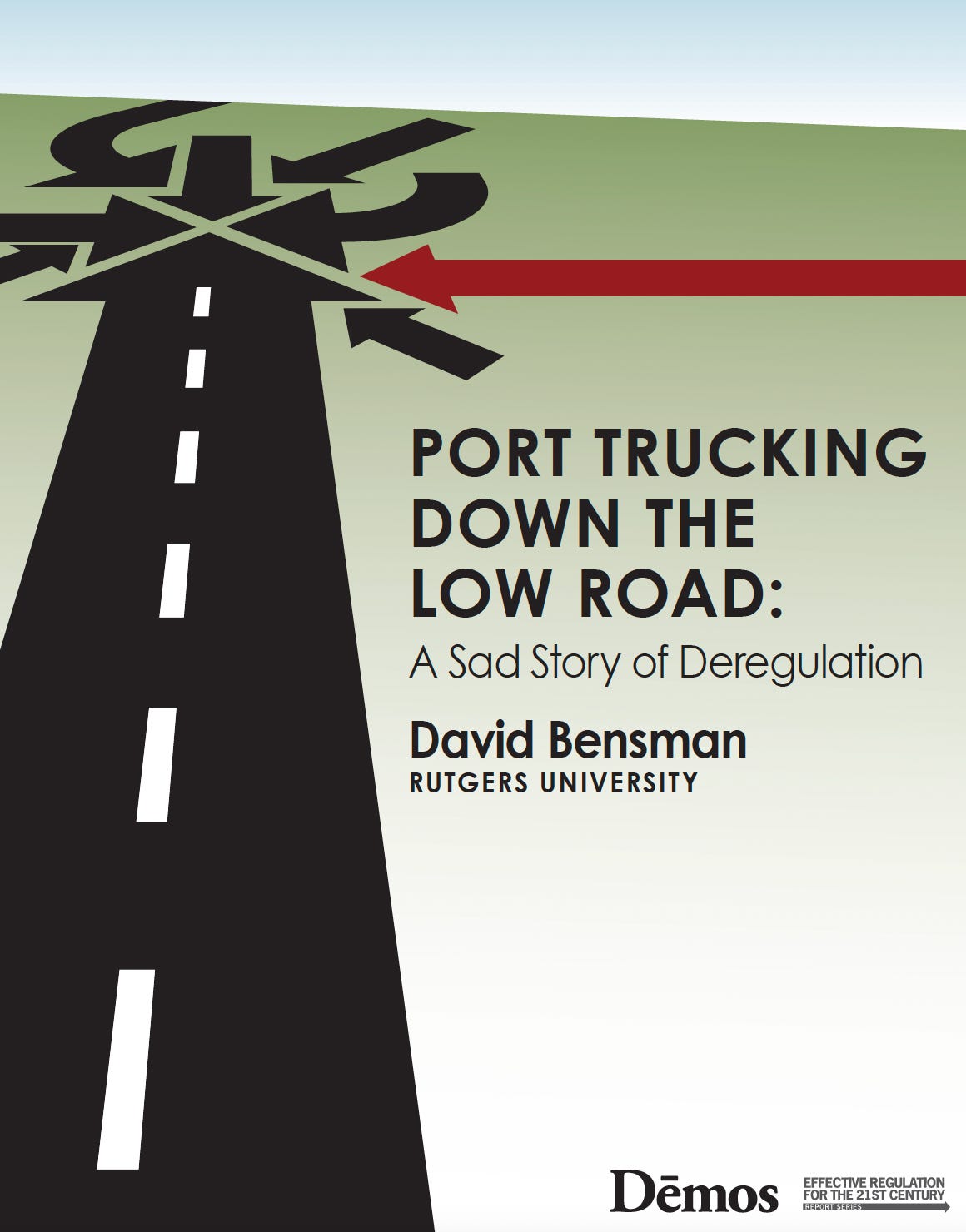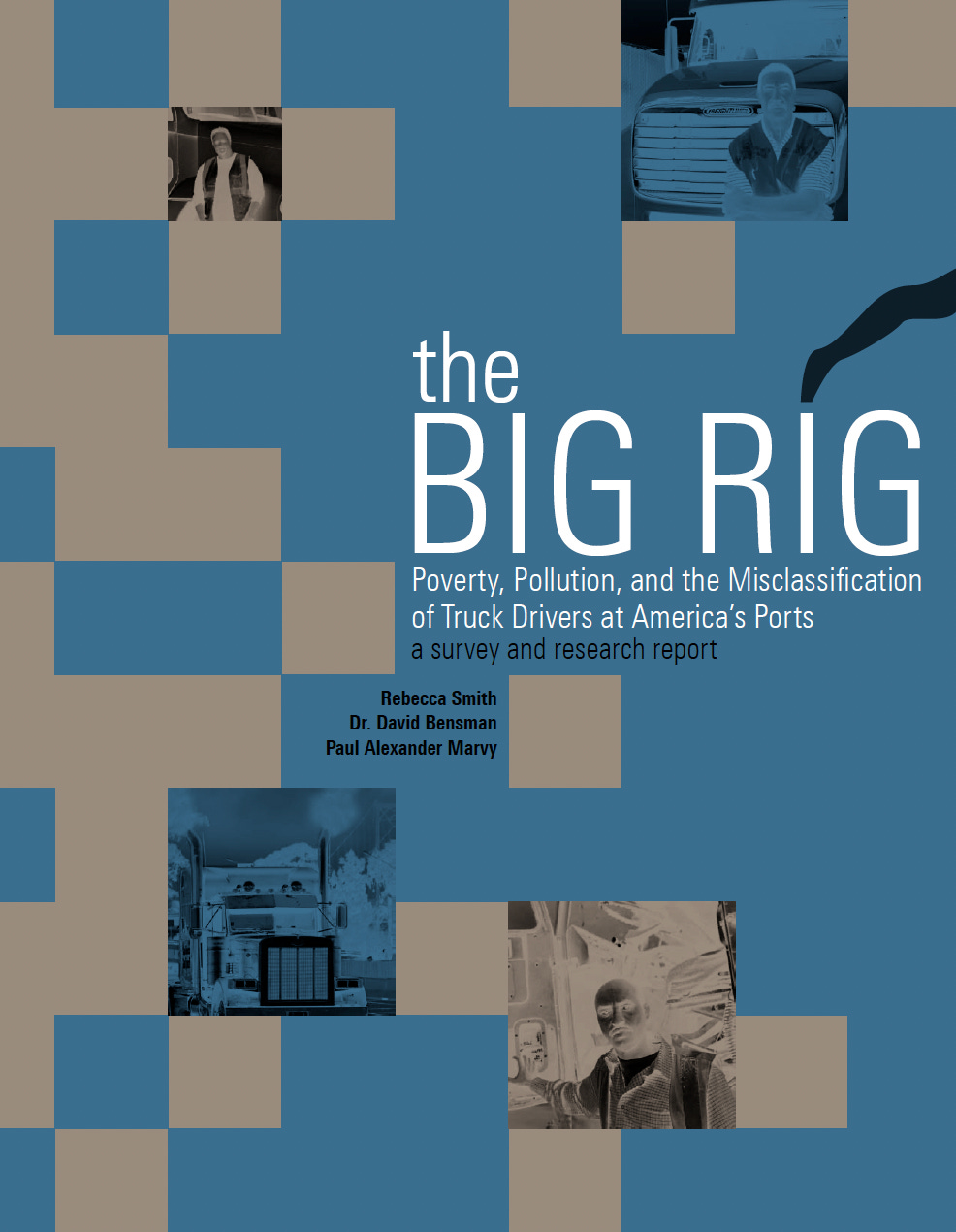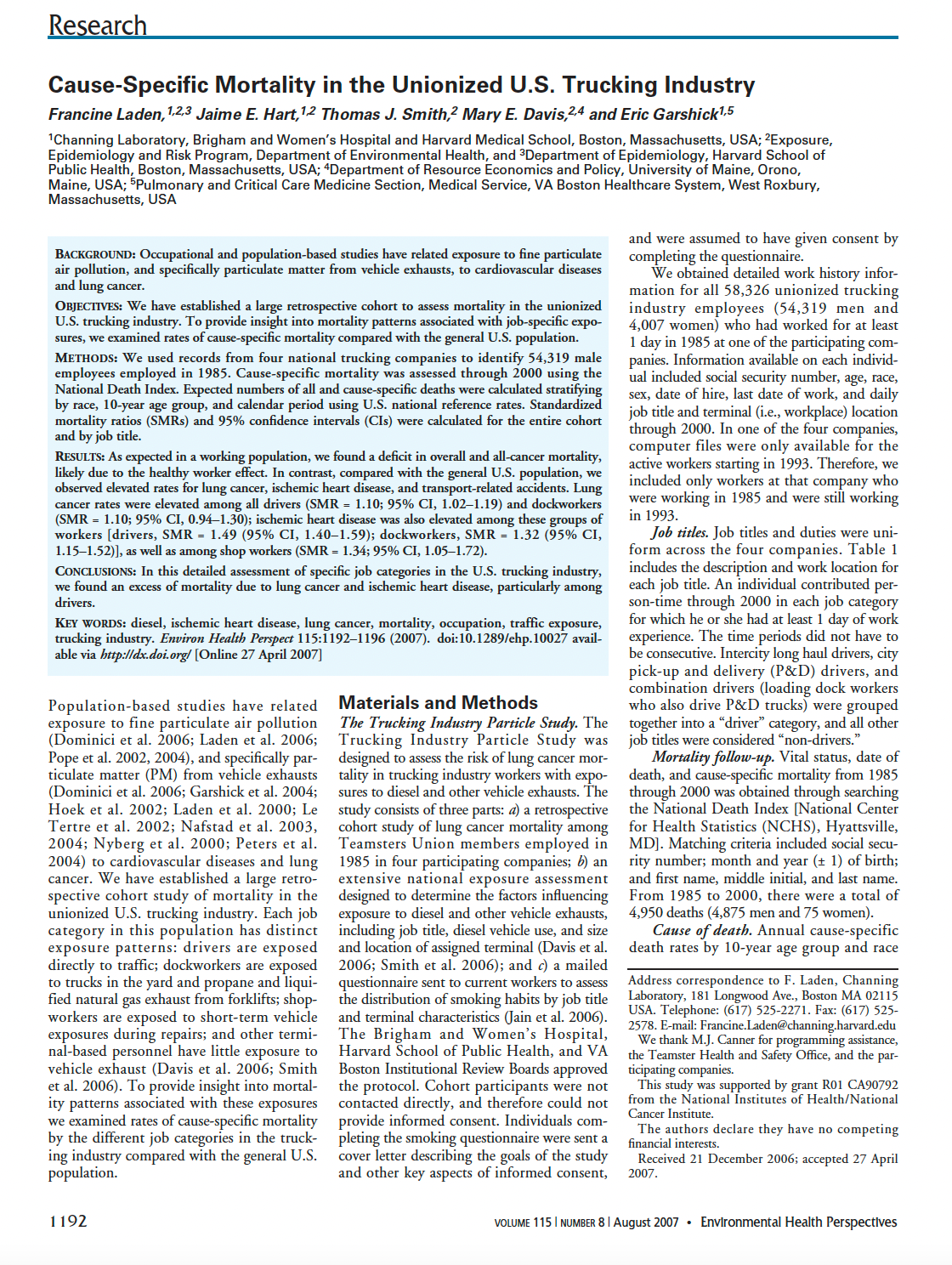The Double Down
This coalition, backed by hundreds of millions of dollars, filed a New Jersey comment that adds more influence from NELP, Dēmos and the Teamsters.
The Coalition for Healthy Ports NY/NJ filed what is, at 162 pages, the longest of the 26 public comments I’m aware of that support proposed independent-contractor rulemaking at New Jersey’s Department of Labor & Workforce Development.
It also appears to be the best-funded public comment in the mix. This organization bills itself as a broad coalition of environmental, labor, faith, community, environmental justice and business organizations—but according to recent tax documents, its leaders are a combination of multimillion-dollar nonprofits out of Washington, D.C., San Francisco and New Jersey, along with the Teamsters union:
Clean Water Action, a multimillion-dollar nonprofit based in Washington, D.C.
Ironbound Community Corporation, a multimillion-dollar nonprofit based in Newark, N.J.
Earthjustice, a San Francisco-based nonprofit whose net assets were more than $244 million last year
New Jersey Environmental Justice Alliance, a multimillion-dollar nonprofit based in Newark, N.J.
South Ward Environmental Alliance, a coalition that focuses on air and water quality
Teamsters Local 469, which is in New Jersey
The Coalition for Healthy Ports NY/NJ’s 162-page public comment is a three-page letter followed by five exhibits. Those exhibits add even more big-money backing:
a 2017 “Gubernatorial Ports Briefing” by the Coalition for Health Ports itself
a 2014 study by the multimillion-dollar National Law Employment Project nonprofit in New York City; Change to Win, a multimillion-dollar nonprofit led by the Service Employees International Union, the United Farm Workers of America union and the Communications Worker of America union; and Los Angeles Alliance for a New Economy, a multimillion-dollar nonprofit in California
a 2009 study written by Rutgers University labor activist mentor David Bensman (now deceased) and backed by Dēmos, a multimillion-dollar racial justice think tank in New York City
a 2010 study by NELP, Change to Win and David Bensman
a 2007 study in the journal Environmental Health Perspectives, with research by authors at Harvard University and the University of Maine
Not counting the universities’ funding, all the above organizations combined represent more than $300 million in financial backing. And since the Teamsters union already filed its own public comment, as did NELP and Dēmos, the Coalition for Healthy Ports NY/NJ comment is a doubling down on those organizations’ influence in the public-comment process.

Here is the 162-page public comment from the Coalition for Healthy Ports NY/NJ if you would like to read it in full:
The overall gist, as stated in the three-page letter at the top, is that the Coalition for Healthy Ports NY/NJ claims 80% of port truckers are misclassified as independent contractors, and that all of these thousands of truckers should be reclassified en masse as employees.
As evidence to support this claim, the letter cites a 2011 New Jersey Labor Department case that involved a single company, and a 2012 case that involved a single trucker.
The comment’s additional evidence is within each of the five exhibits, which sometimes are based on one another as sources, and whose substance you can judge for yourself below.
Exhibit 1: ‘Gubernatorial Ports Briefing’
This 2017 report links the issue of employment status to other issues, calling port pollution “an environmental and health injustice” and saying that jobs available to local residents at the Port of NY&NJ “are mostly low wage.”
The report then lays out proposed solutions to these problems, including calling on the New Jersey Department of Labor and other agencies “to conduct a full investigation into misclassification, tax evasion and wage theft in the port trucking industry.”
Page 15 of this report makes the case about employee misclassification being a specific problem for truck drivers. It’s a three-paragraph section whose sources are a 2016 Gothamist article that’s based on a New York Times article about then-Governors Andrew Cuomo of New York and Chris Christie of New Jersey fighting about the minimum wage; Bensman’s research that is Exhibit 3 below; and NELP’s research that is Exhibit 4 below.
These three paragraphs state:
“Port trucking is based on an independent contractor (IC) system of employment. The majority of goods moved from the ports in our region are consumed within 100 miles of the port and 85% of these goods are moved via drayage truck from seaports to warehouses to retailers and consumers. It is estimated that over 9,000 port truck drivers transport more than 14,000 containers every day. Drayage (container) trucking is an essential component of the global supply chain. ‘Drivers are on the job five days a week, from ten to twelve hours a day, earning an average income of $28,000 per year. Because they are not considered employees, they have no benefits—no health care, pension, paid vacation, etc.
“Drivers must pay for the rig and for ‘truck maintenance, tolls, road taxes, licenses, and fuel.’ According to a 2009 Rutgers study, drivers reported working, on average more than 14 hours per day. This low road employment model, means that drivers make so little money that they can afford only the oldest and dirtiest trucks. According to the PANYNJ, 65% of all drayage trucks have pre-2007 model engines, which emit significantly more diesel pollution than newer engines. In addition to local impacts, these diesel emissions directly impact drivers that are exposed daily in the confined of their truck, in traffic, and while idling in long queue lines at the port.
“The IC misclassification also leads to numerous labor law violations. Investigations by the U.S. Department of Labor, New Jersey Department of Labor, as well as numerous private lawsuits, also suggest that drivers may be misclassified as ‘independent contractors’. The low wages that the misclassification system forces on drivers also makes it impossible for drivers to buy or maintain trucks that comply with current pollution standards. Finally, New Jersey law requires employers to make contributions towards worker’s compensation, unemployment benefits and other employment taxes. Port truck drivers do not enjoy any of these employment protections due to their misclassification. While the PANYNJ relies heavily on port truck drivers (i.e. 85% of goods transported by these drivers off port), the industry wide misclassification undergirds the economic exploitation of low wage drivers and the severe localized health impacts from mobile diesel emissions tied to port trucking.”
There is no citation for that bit about investigations at the U.S. Department of Labor, the New Jersey Department of Labor or the private lawsuits, so it’s impossible to verify how the investigations actually turned out.
Nevertheless, one of numerous recommendations at the end of this section is sweeping, and if implemented would give preferential treatment to companies with employees over companies that work with independent contractors:
“Establish a preference in the contractor selection process for employers that provide good jobs, by prioritizing firms that provide living wages, health benefits, and paid sick days.”
These “good jobs,” of course, would also make the drivers unionizable employees.
Exhibit 2: ‘The Big Rig Overhaul’
This 2014 study by NELP, Change to Win and Los Angeles Alliance for a New Economy makes the case that stopping employee misclassification is an issue of fighting for “economic justice.”
On Page 4, this study that is more than a decade old claims that on a national level, misclassification is a $1.4 billion-a-year problem.
More recently, on December 17, 2024, the U.S. Department of Labor announced that since January 2021—after nearly four full years of prioritizing the issue of employee misclassification during the Biden administration—it had recovered only about $41 million in back wages for some 28,000 workers.
But let’s return to the public comment that was filed in New Jersey. Page 4 of this study in Exhibit 2 also states something that I think is pretty darn noteworthy, given that this study was published more than a decade ago:
“The U.S. Department of Labor should expedite its recently-announced study on the incidence of worker employment classification as federal studies are now outdated.”
Notably, while NELP calls the federal research outdated in this 2014 report, NELP itself cited that same federal research less than a year ago in front of Congress, and in the public comment that is filed with the State of New Jersey right now.
But I digress again.
This study in Exhibit 2 opens by describing the study in Exhibit 4 below, and by saying that the researchers determined a typical port driver is misclassified because of IRS Test regulatory language—not the ABC Test language that New Jersey’s Labor Department proposal is about.
To support this claim, the study includes two examples from New Jersey:
One that dates back to 2007, involving a single company
One that dates back to 2012, involving a single driver
Based on this and other cases from other states, the researchers determined that “approximately 82 percent of drivers are independent contractors. We also estimate that 80 percent of these independent contractors are misclassified.”
There is one other reference to New Jersey after that, where the researchers write: “A New Jersey-based port trucking company fired ‘independent contract’ drivers who had organized a meeting with an attorney, a firing the National Labor Relations Board later overturned, finding the drivers to be employees for the purposes of the National Labor Relations Act.”
According to the footnote for this claim, it happened in 2013, also well more than a decade ago.
Exhibit 3: ‘Port Trucking Down the Low Road’
This 2009 study focuses on the Federal Motor Carrier Act of 1980, and cites the misclassification of port drivers as a problem the law created. It urges regulators to “prohibit employers from calling workers independent contractors in sectors where it’s unlikely that workers would be in business for themselves,” and suggests federal regulations that create “the presumption of employment.”
The author also makes clear that he believes port truckers were better off when they were organized employees with the Teamsters union:
“Before 1980, trucking companies had to get a license from the Interstate Commerce Commission to haul freight to and from the ports. The ICC limited the number of trucks to assure stability; the resulting rate structure was sufficient for companies to earn stable profits while providing workers with decent wages with benefits. The International Brotherhood of Teamsters organized and bargained for most of the port truckers, who received wage and benefit packages comparable to those of autoworkers, steelworkers, and over-the-road drivers.
“All this changed with deregulation.”
This report makes no mention of the mafia infiltration of the Teamsters union that was happening before 1980, as detailed in this public comment that the New Jersey Association for Justice filed with the state Labor Department about the currently proposed rulemaking.
“Port Trucking: Down the Low Road” also accuses independent-contractor drivers of breaking various traffic laws and of contributing to “carnage on our nation’s roads”:
“The drivers’ low earnings and the fact that they are paid by the delivery, not by the hour, act as a constant pressure to squeeze an additional move into the day’s work. This pressure can have unsafe consequences not only for the driver, but for the public as well. Drivers may accept unsafe chassis, ignore the fact that their containers are overweight, speed through local streets, run stop signs and traffic lights, tail-gate the cars in front of them, and unsafely pass slow-moving vehicles, All these actions contribute to the carnage on our nation’s roads.”
As evidence to support this claim, the report details an incident involving a single trucker in 1990. The report also notes that federal regulations were adopted in 2008 to address the root cause of that incident.
Further evidence provided for this claim is an incident that involved a trucker in Florida in 2007, followed by a description of a Blue Ribbon Commission that the City of Miami created to address the root cause of that incident.
This study goes on to ask the question: “How widespread is misclassification?” It then continues: “The General Accounting Office found in 2006 that 15 percent of employers improperly categorized employees as independent contractors, and noted that the victims are disproportionately immigrants.”
That 2006 Government Accountability Office statistic is actually taken from the same old 1984 data that has cropped up in numerous public comments filed with New Jersey’s Labor Department this year.
Also notable is that the 2006 GAO report found—same as today—that fewer than 1 in 10 independent contractors said they would prefer a traditional job.
Exhibit 4: ‘The Big Rig’
This 2010 study is billed as a “first-of-its-kind analysis” involving worker employment status. It’s based on a literature review; an aggregation of 10 surveys; and an analysis of “a diverse group of drivers and the firms they work for, drawing on exhaustive, original interviews and collected employment documents such as contracts, leases and policy manuals.”
The researchers analyzed all of this using IRS Test regulatory language, not the ABC Test regulatory language that the New Jersey Labor Department’s proposed rule is about.
Similar to the study in Exhibit 3, this study in Exhibit 4 also laments the Federal Motor Carrier Act of 1980, cites the rise of independent contractors, and notes that “unions disappeared.”
The data it analyzed included previous surveys of 299 drivers in New York and New Jersey in 2009; as well as interviews done in early 2010 that included 10 drivers in New York and New Jersey.
This study concludes that: “Viewed in light of the strict IRS test of employment status, these findings strongly suggest that the majority of the drivers we studied were misclassified.”
Again, the proposed New Jersey independent-contractor rule is about ABC Test regulatory language. Not the IRS Test language.
Exhibit 5: ‘Cause-Specific Mortality in the Unionized U.S. Trucking Industry’
This study, oddly, follows the previous claims about how life was better in the trucking industry when drivers were unionized with the Teamsters prior to 1980. But these researchers wrote in 2007 that unionized truck drivers suffered from “an excess of mortality due to lung cancer and ischemic heart disease, particularly among drivers.”
That sounds bad. I hope things turned out OK for these unionized employees, including the ones the researchers identified as being organized with the Teamsters.
But this study does not involve independent contractors at all.


